School District of Osceola County
EMPOWERED LEADERS:
School leaders who focus on scaling great teaching beyond individual classrooms
Promising Practice:
Data Stocktake for Authentic Distributed Leadership
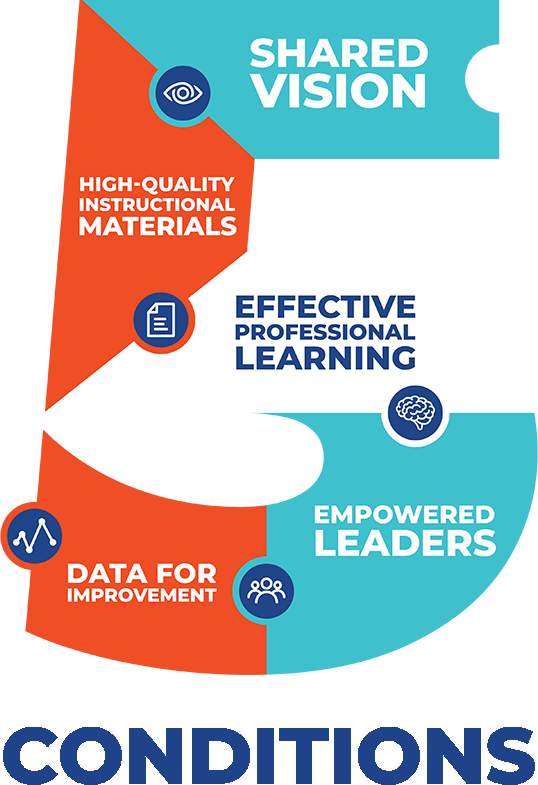
Our goal for this series of Cases for Impact is to provide education leaders and teachers with knowledge and resources needed to ensure that great teaching and learning is consistently realized in all Florida schools. We believe that if education leaders are empowered to know how to recognize, support, and scale excellent teaching practices, we will see tangible results in the classroom.
In partnership with the Florida Association of District School Superintendents (FADSS), Impact Florida launched the Districts for Impact initiative in 2019 to support Superintendents’ focus on supporting excellent instruction within their systems, for all kids. This series of Cases for Impact highlights the promising instructional practices gleaned from the inaugural cadre of five Florida districts.
While we recognize that there are many conditions that factor into a student’s ultimate success, Impact Florida focuses on the factors that leaders and educators can control in their classrooms to improve student engagement and learning. We call these factors the Five Conditions That Support Great Teaching.
This Case for Impact Profile deconstructs how the School District of Osceola County (SDOC) empowers school leaders to scale great teaching beyond individual classrooms through a data-rich continuous improvement process to monitor strategic implementation.
New Leader, New Vision
Dr. Debra Pace assumed the position of Superintendent of SDOC in March 2016. As a former high school principal and deputy superintendent in SDOC, this role enabled Dr. Pace to return to the district after serving as the Associate Superintendent for Human Resources Services Division for Brevard Public Schools between 2011 and 2016. Dr. Pace is a fourth-generation native of Osceola County, who saw returning to the district as an opportunity to “[come] home to serve my neighbor’s kids, my family’s kids, today’s kids, and tomorrow’s kids who are going to be in our school system.”
Upon her appointment, Dr. Pace worked with the Board, community, and staff to develop an ambitious three-year strategic plan with a laser focus on moving the district’s grade up from its seemingly permanent “C” status. Historically a “C”-rated district under the Florida report card system, this new strategic plan was designed to provide a systematic route to district- wide academic improvement. The comprehensive plan outlined 17 interconnected district goals intended to serve as guideposts for work on both the district and school levels.
SDOC’s ambitious strategic goals included:
To ensure the new plan remained at the forefront of the work in schools and across the district, leadership introduced the following theory of action:
If our leaders become proficient at progress monitoring and transferring findings into tangible actions, then student achievement will increase.
This theory of action anchored a new data-driven process called a “Stocktake.” The Stocktake data process is a systematic way of monitoring strategies for improvement through the routine examination of evidence, deliberation, and accountability. This model is based on an improvement method called “Deliverology” and the Osceola version was designed and implemented with support from consultants from DeliverEd.
ABOUT THE SCHOOL DISTRICT OF OSCEOLA COUNTY (SY 2019-20)
SDOC is the seventh-fastest growing county in the country with an anticipated enrollment of more than 100,000 students within the next 10 years. The district is very diverse and is home to more than 68,500 students, with 106 spoken languages from more than 100 different countries with various cultural and ethnic backgrounds.
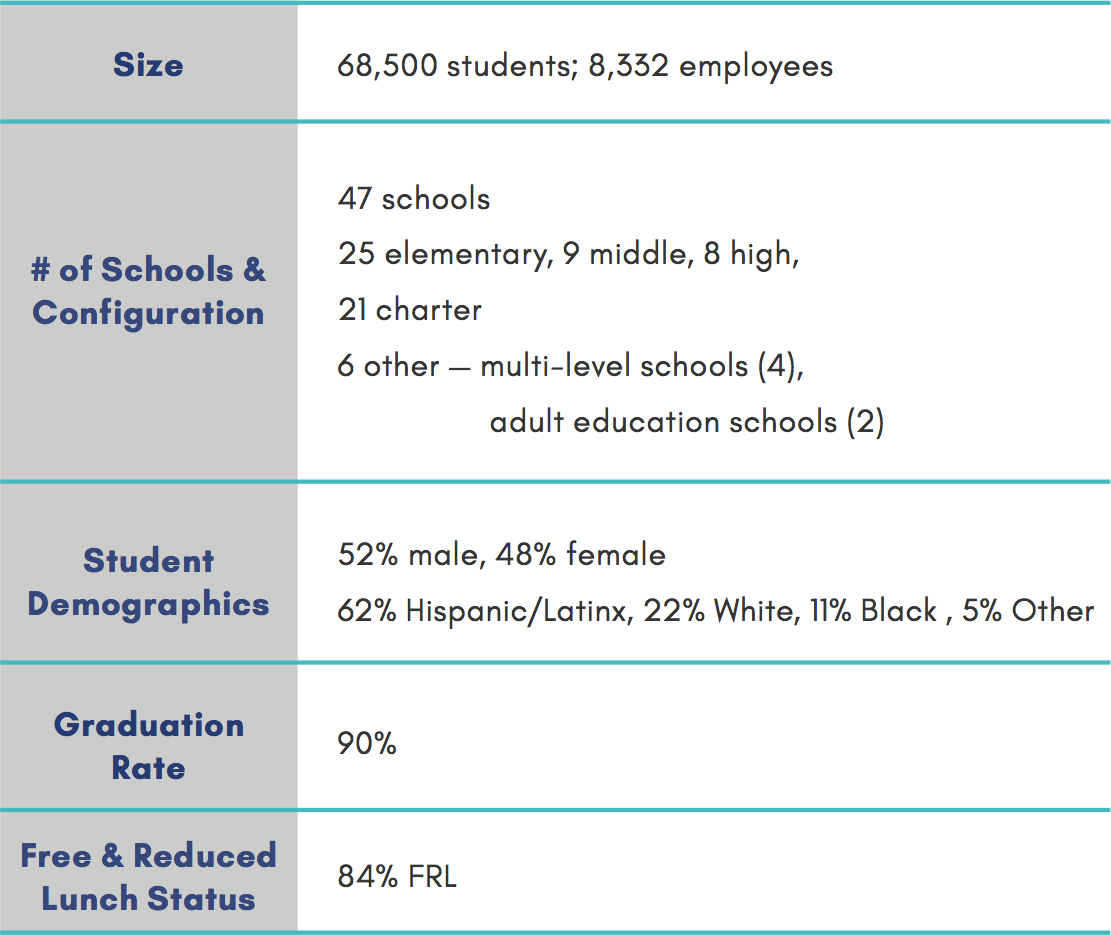
SDOC’s Promising Practice: Stocktakes for Authentic Distributed Leadership
The Stocktake process (Fig. 1) leverages a distributive leadership model that positions every leader to use data to determine areas of focus for which they and their teams would take action to ultimately improve district performance and student achievement. In the initial phase, District Stocktakes were put in place to build the capacity of district leaders and keep them focused on the new mission and vision. The process helped transform the culture of the district by creating a new sense of collective ownership through transparent continuous improvement and accountability.
In the 2018-19 school year, district leaders, with the support of DeliverEd consultants, trained all department leads and school leaders to conduct a mirror Stocktake process at their own levels of work. The goal of the Stocktake at each school and department would be to empower and support school leaders to maintain focus on the right work, as outlined in the school improvement plan and strategic plan, respectively, with a higher level of accountability. This process also encourages schools and departments to own the work of their improvement instead of it being a matter of district compliance.
While the process itself seemed straightforward, the most challenging aspect of implementing the Stocktake process was changing the mindset of school leaders. There needed to be a culture of transparency and vulnerability. Dr. Pace set the stage for this early on through the district Stocktake process, but it also had to be done by each school team with their specific school context in mind. “There were tears.” School administrators provided additional coaching to participants who struggled with the new process — either taking the feedback personally or not implementing respective action in a timely manner.
"Prior to the Stocktake, we used to write a school improvement plan at the beginning of the year and submit it on the computer. We wouldn’t look at that plan again until December. It wasn’t until that point we would realize how far from our goals we’d gotten. The Stocktake process forces us to assess where we are in relation to our goals every single month. The goals become front and center. We use the process to filter the initiatives we take on and ensure they are in alignment with our goals. Our work has become very focused and intentional as part of the process."
- Christie Ray, Principal, Westside K-8
While the work of the Stocktake process culminates in a single meeting, successful process implementation goes beyond the meeting itself and includes critical pre-work and follow-ups.
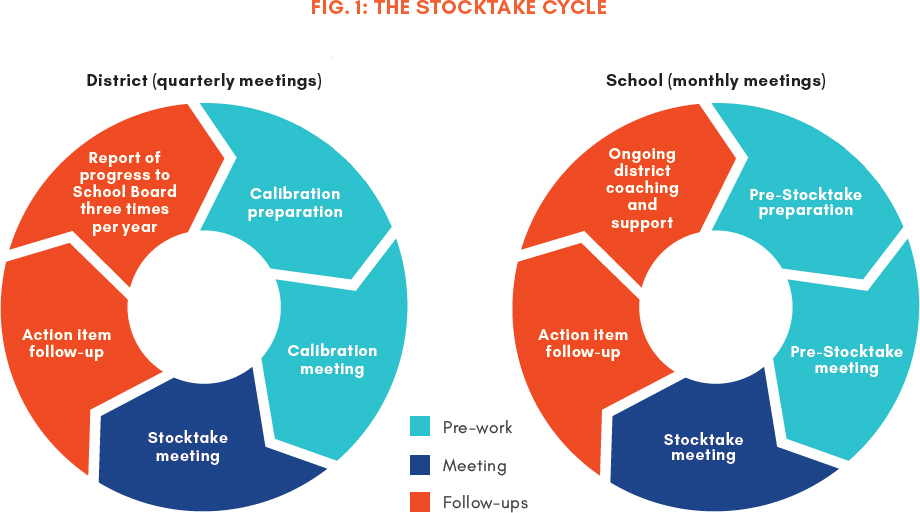
Leading Change Through Stocktake Implementation at the School Level
School principals and staff received their initial training on the Stocktake process in June 2018. Select schools were then identified to receive further onsite coaching from DeliverED throughout the school year and to share lessons learned with colleagues. Since that time, the district has also provided a plethora of resources to schools, including a video of an actual district Stocktake as a guide to help implement the process.
"It’s so easy to get caught up with the day-to-day things happening in our school, but the Stocktake forces us to slow down and examine where we are and where we’re headed — every coach, every assistant principal, in every subject — in real-time... it’s become our non-negotiable."
- Georgette Paul-Zin, Assistant Principal, Gateway High School

While Stocktakes are led by school principals, the assistant principal(s) are in charge of the preparation and facilitation of the meeting (Fig. 2). Each area of focus of the annual plan is owned by a point person - typically a coach, dean, or school counselor within the school. This design helps empower and prepare a pipeline of leaders in the district; from coaches to assistant principals, assistant principals to principals, and deputies to department leads.
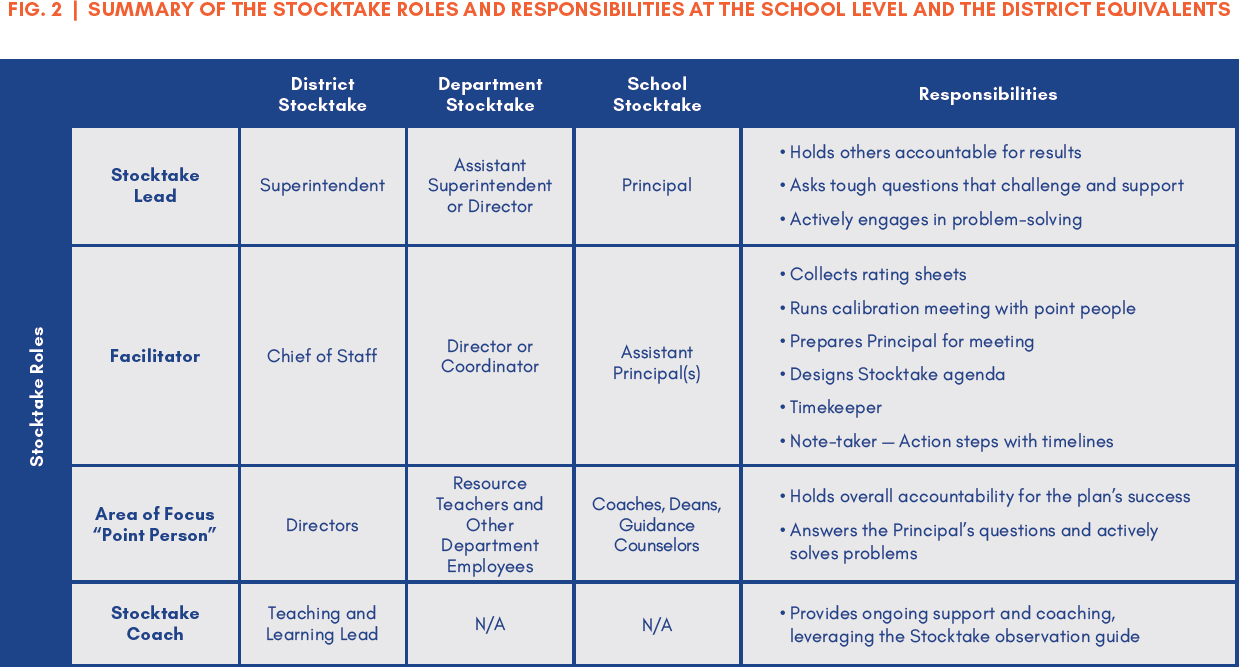
Stocktake Implementation and Progress Monitoring
The initial training and ongoing district support of the Stocktake process is focused on equipping school leaders with the basic tools needed to run the process successfully. It provides a solid foundation and common framework for all schools to start from and build upon.

It all begins with the district providing individualized, real-time data snapshots to each school team to drive the Stocktake discussion each month. School snapshots are provided one week in advance of the Stocktake to ensure teams have access to timely and relevant formative and summative data. Point persons then complete the rating sheet, also referred to as heat maps, for their assigned focus area and submit to the Stocktake facilitator. The rating sheet serves as the Stocktake “dashboard” and includes a color-coded status of rating categories (Fig. 3) and a brief rationale of the ratings for each focus area supported by local and district data.
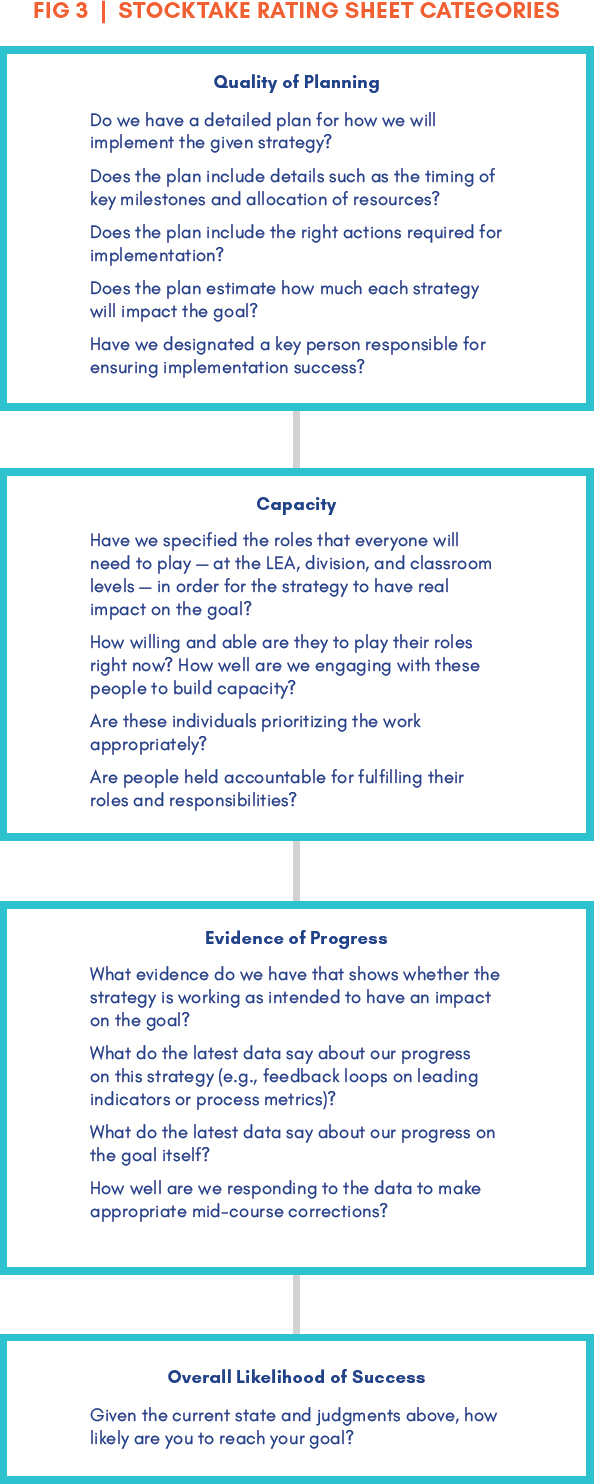
Each rating category is assigned a color to illustrate its state of progress (Fig. 4). Instead of the traditional red, yellow, and green color codes used in progress update dashboards, the district chose to implement a four color code that enables teams to more definitely portray the implementation progress as positive or negative. They feared that failing to call out challenge areas and obstacles would enable school teams to forget about them or leave them unaddressed.

During the Stocktake meeting, the Stocktake Lead goes through the rating categories and color code of each agenda item while asking prepared deep-dive questions and prompting each responsible party to share what is being implemented and what can be changed to move the needle on each goal. The discussion is centered around the data, problem-solving, and actionable next steps. Designated team members capture detailed notes, action items, and due dates, along with serving as timekeepers and making real-time changes to the rating sheet dashboard. These notes are what drive the next steps and coaching focus of each team member immediately following the Stocktake meeting.
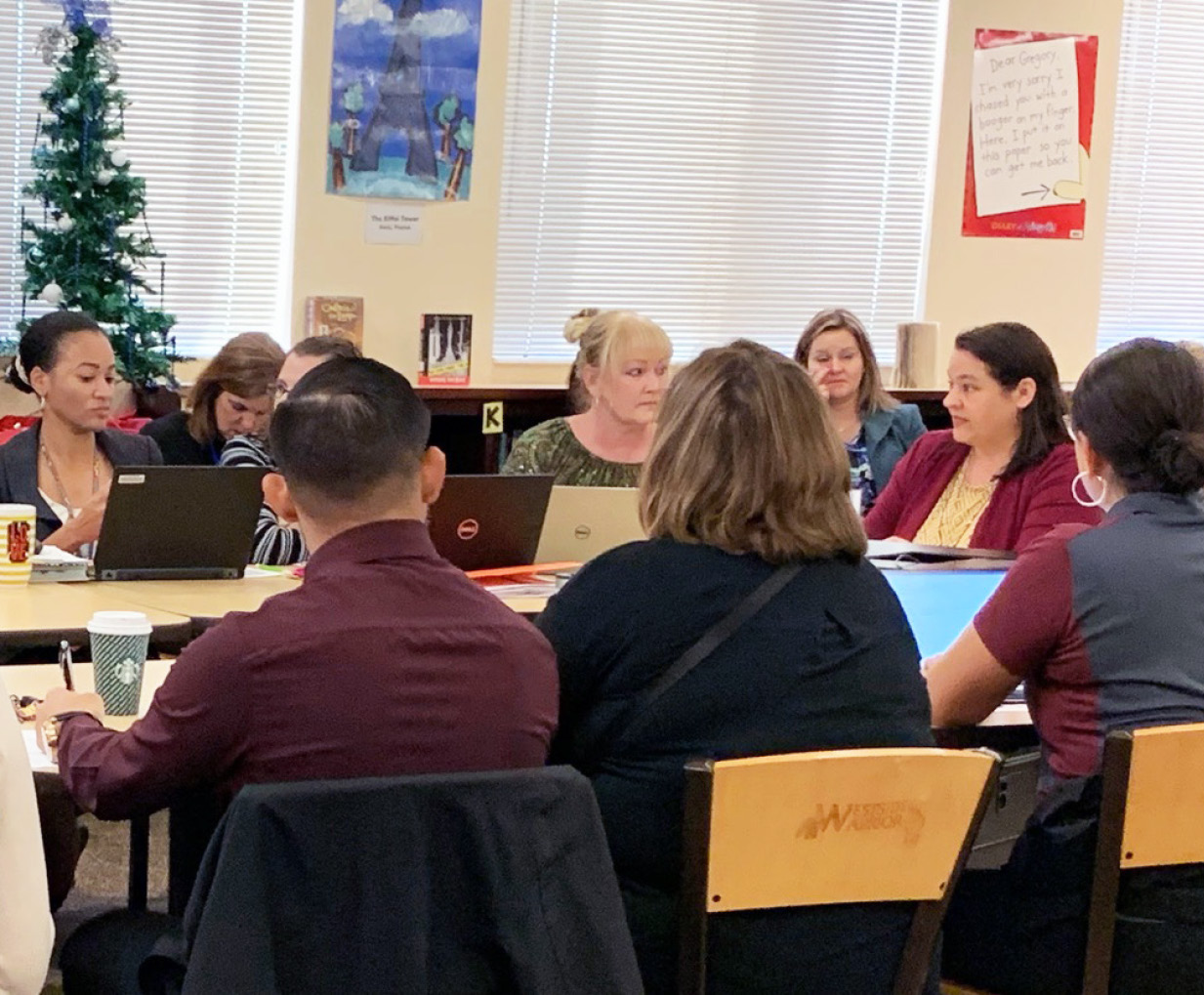
Additionally, district instructional leaders observe monthly school Stocktake meetings and have monthly check-ins with principals to provide ongoing coaching to school teams. The district believes they have to inspect what they expect; thus observations are tracked using the School Stocktake Observation Guide. District leaders have periodic calibration meetings to review these guides and school ratings to ensure there is alignment and that schools are seeing the same
thing district leaders are seeing.
Signs of Progress
While the district does provide some initial guidance about the Stocktake process, schools have a fair amount of autonomy. School leaders spend a considerable amount of time adapting the Stocktake process to meet their needs and cultivate the trust needed to drive improvement in their schools. Depending on the leadership style of the principal and assistant principal, the size and efficacy of the Stocktake team can vary from school to school. In that regard, the district has encouraged schools to embrace the learning and evolution of this process along the way as they implement. Thus, the pre and post Stocktake actions of each school may look different across schools.
Updates from the Stocktake on goal progress are made available to the rest of the school or department community via posters in common areas and the school newsletter. Similarly, school Stocktake rating charts are presented to the Chief of Staff and Assistant Superintendents during quarterly check-ins.
"A lot of times in education, we get caught up in how things have always gone. This process allows us to work together in a whole new way...It streamlines the work and makes it easier to collaborate across curriculum areas. It creates an environment for us to hold each other accountable, but it’s a space for us to share and scale our wins."
- Jeremiah Swartz, Math Coach, Gateway High School
Since the adoption of this strategic plan, the district has seen a three-year upward trend in its district grade, moving from its historic rating of a “C” to a “B” (Fig. 5). As a result of the successful implementation of school Stocktakes within the last year, many schools have reported an increase in communication and cross- curricular collaboration. Planning, teaching, and learning is no longer siloed as schools have increased transparency and shifted conversations about data to focus specifically on students. The data-driven focus has helped schools consciously prioritize their goals and focus on addressing what students want and need from their school experiences. At the secondary level, acceleration has been a major focus of the work, along with incorporating Equity Teams into school practices.

Looking Ahead
SDOC continues to strengthen its commitment to empowering school leaders by supporting leaders as they implement student-centered, data-driven, and research-based strategies that stimulate continuous school improvement. As they move forward in this work, they will be focused on implementing strategies to ensure the work of the Stocktake makes it to the end-user and that there’s high-quality Stocktake implementation at every school site and in every district division.
Leadership Through a Crisis: The Osceola Perspective on Empowerment during COVID-19
In their immediate response to COVID-19 in the spring of 2020, SDOC built on the strong foundation of distributive leadership central to their Strategic Plan. They balanced existing tools — like their district Stocktake process — with compassion and flexibility for their leaders, who were working in overdrive to create “a guaranteed and viable curriculum” across schools, building training to support their teachers in a distanced learning environment, all while overseeing distribution of devices and hotspots and meeting the needs of families.
Standing up a new way of work that could still deliver truly meaningful instruction in a crisis proved a challenge for all school districts, but SDOC recognized an opportunity to take empowerment and collaboration among leaders and teachers to new levels. “Getting our teachers in that ‘guaranteed and viable curriculum’ following our curriculum unit plans with the quality grade-level standards and appropriate work was a real positive,” Dr. Pace noted. “We have been talking about professional learning communities for five years. But when they went electronic and we were doing this whole new way of teaching, it’s like teachers really started to grasp their power and potential to have that collaboration. The collegiality and collaboration among teachers’ electronic PLC’s are going to be our new way of work.”
As it enters SY 20-21, SDOC is embracing technology itself as a new form of empowerment and a tool for deeper and yet more efficient collaboration among SDOC leaders. The Stocktake process itself will include enhancements learned through the COVID-19 experience, including a real-time Interactive Digital School Stocktake Report that will more quickly allow school leadership teams to identify and address student needs at the subgroup level.
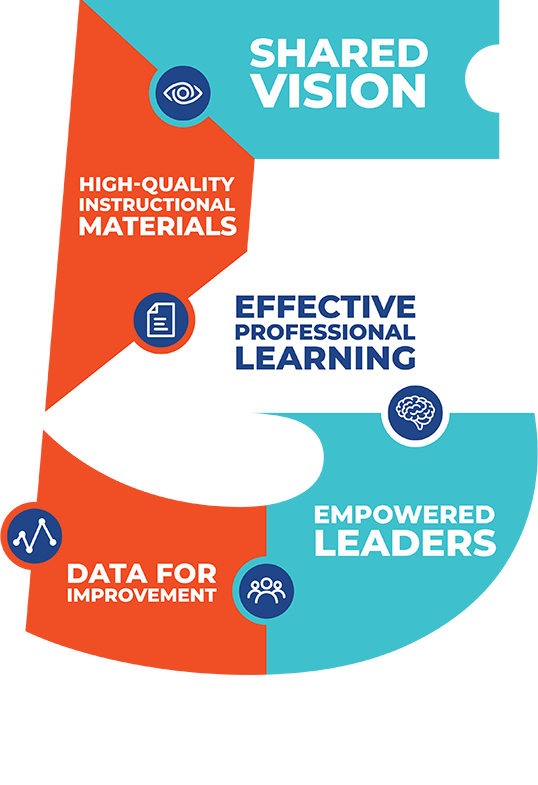
Reflection Questions
- What evidence of the Five Conditions That Support Great Teaching do you see in this case for impact?
- What processes exist within your school or district to empower leaders to scale great teaching beyond individual classrooms?
- How does your school or district ensure the process is implemented with fidelity?
- f none exist, what aspects of this Case for Impact could you use as a guide to get started?
- If you were to develop and implement a process to strategically empower leaders to scale great teaching in your school or district, what potential roadblocks would you be likely to encounter? How might you navigate these?
- How have you re-envisioned empowerment to include virtual environments of support and collaboration for your teachers and leaders? What could you apply from Osceola’s experience?

